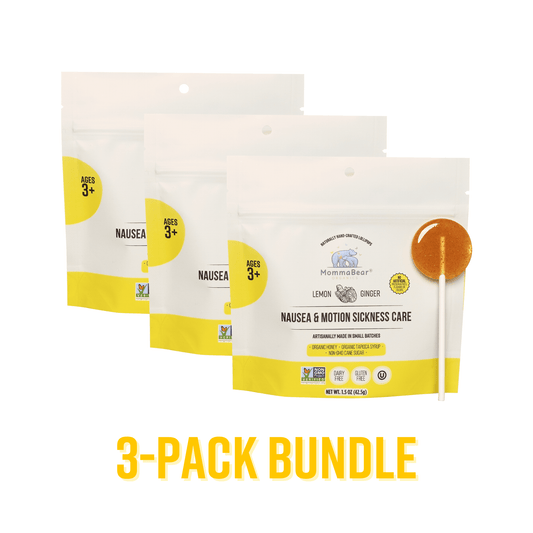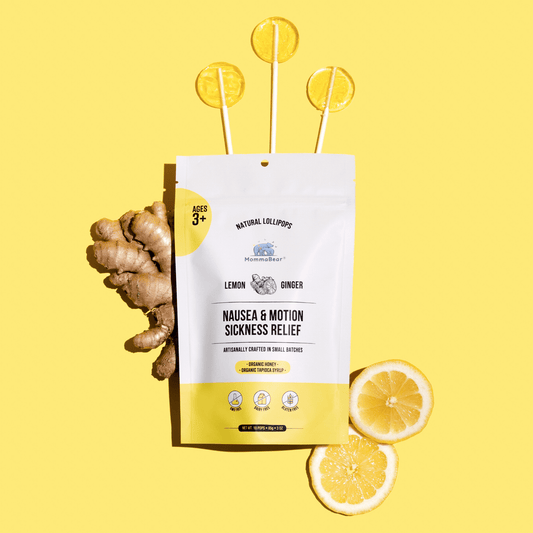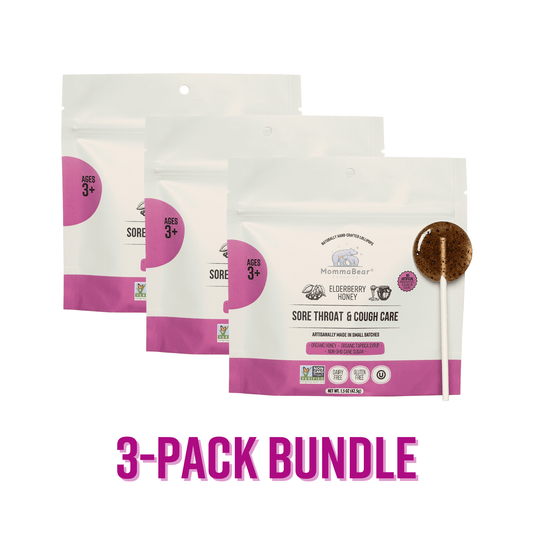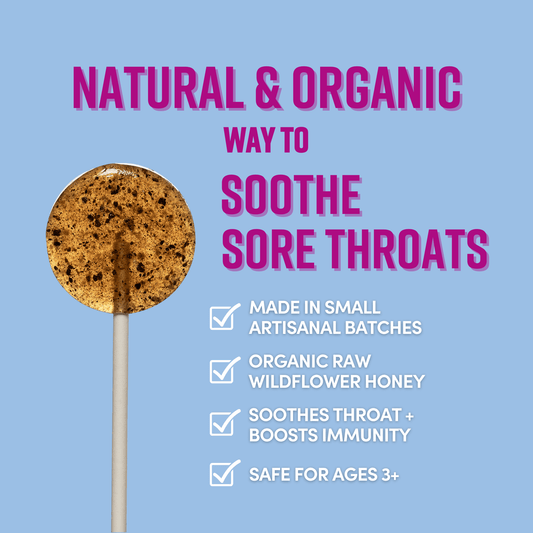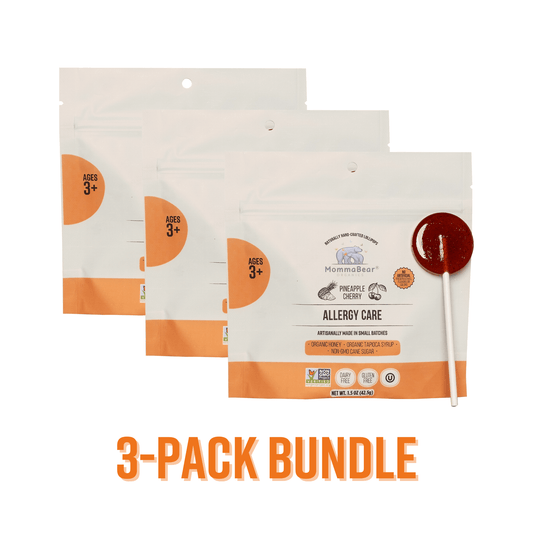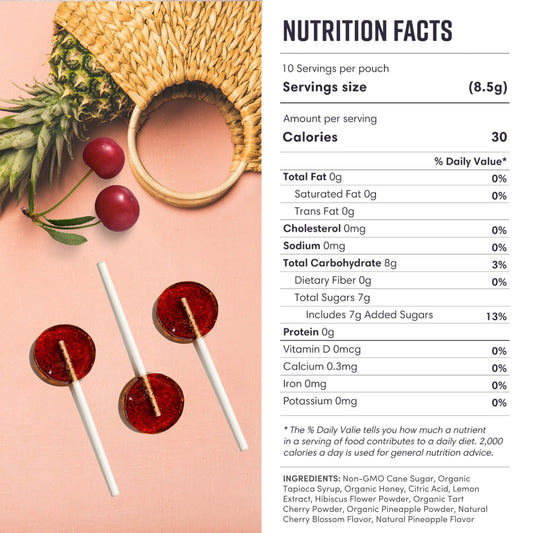Every spring, it's the same story for me. The world starts looking beautiful again, and I just want to hide inside because my eyes are itchy and I can't stop sneezing. For years, I just dealt with it, but then I started hearing people talk about raw honey. At first, I was skeptical, I mean, it’s just honey, right? But the more I looked into it, the more it seemed like there was something to this whole idea. It’s not a magic cure, but it feels like one of those simple, natural things that can actually make a difference.
-
What it does: Raw honey may help reduce seasonal allergy symptoms like sneezing, itchy eyes, and congestion by exposing your immune system to small amounts of local pollen.
-
How it works: Similar to allergy shots, raw honey contains traces of local pollen that may help your body build tolerance over time.
-
Key benefits: Studies suggest raw honey can lower allergy symptoms by up to 60%, double symptom-free days, and reduce the need for antihistamines.
-
Why raw honey? Unlike processed honey, raw honey retains pollen, enzymes, and antioxidants that may aid allergy relief.
-
How to use: Start with 1 teaspoon daily, gradually increasing to about 1 tablespoon per 50 pounds of body weight. Take it consistently, starting a few weeks before allergy season.
Note: Consult a doctor before use, especially if you have severe allergies, are pregnant, or have specific health conditions. Avoid giving raw honey to infants under 1 year.
Here’s a quick little chart I use to remember the basics.
Raw vs. Processed Honey: Quick Comparison
| Feature | Raw Honey | Processed Honey |
|---|---|---|
| Appearance | Cloudy or opaque | Clear and smooth |
| Contents | Includes pollen, enzymes, antioxidants | Filtered; lacks natural components |
| Processing | Unprocessed | Pasteurized |
| Allergy Relief | Contains local pollen | Limited benefits |
It seems like such a small thing, but choosing the right kind of honey is everything. I’ll get more into that, but honestly, just knowing there's a natural option out there gave me a little bit of hope during the worst of my sniffle season.
The Science Behind Raw Honey and Allergies
Seasonal Allergy Basics
I never really got what seasonal allergies were until I pictured it like my body overreacting to something totally harmless, like pollen. It thinks it’s under attack, so it freaks out and releases these things called histamines. And that’s what gives you the runny nose and itchy eyes. It's wild to think how many people go through this—I read somewhere that it costs billions in lost productivity, which sounds about right for how useless I feel on a bad allergy day. It’s just your body trying to protect you, but getting it all wrong.
Raw Honey's Effect on Allergies
So, the whole idea behind raw honey is kind of like fighting fire with fire, but, you know, gently. Someone explained it to me like this: it’s a bit like getting an allergy shot, but way less intense.
"The concept of using local raw honey for allergy relief is rooted in the principles of immunotherapy. This approach suggests that regular consumption of small amounts of local pollen present in raw honey may help desensitize the immune system to these allergens over time, offering a safer alternative to subcutaneous injection treatments". - Bill Reddy, LAc, DiplAc
Basically, you’re introducing your body to the very pollen that’s making you miserable, but in tiny, tiny amounts. Over time, your body might just learn to chill out and not see it as a threat anymore. I stumbled upon this study from 2011, and the results were pretty amazing. People taking a specific type of honey had 60% fewer symptoms and way more symptom-free days. It really made me think about how much we lose when we process our food.
Raw vs. Processed Honey Differences
This is the part that really clicked for me. I used to think all honey was pretty much the same—the stuff in the little bear bottle was just... honey. But it turns out there’s a huge difference.
| Characteristic | Raw Honey | Processed Honey |
|---|---|---|
| Appearance | Cloudy or opaque | Clear and smooth |
| Contents | Includes pollen, enzymes, beeswax, antioxidants | Filtered; most natural elements removed |
| Processing | Straight from the hive | Pasteurized |
| Additives | None | May include added sweeteners |
| Allergy Benefits | Contains local pollen that may aid immunity | Limited due to filtration |
"First things first: when we're talking about honey and allergies, we're talking about raw, unfiltered honey. This is the stuff that comes directly from the hive to your table, complete with all the pollen, enzymes, and other natural components that processing tends to strip away".
That clear, perfectly smooth honey you see on most grocery store shelves? It’s been heated up and filtered so much that almost all the good stuff—the pollen, the enzymes, all the things that might actually help your allergies—is gone. They do it to make it look prettier and last longer, but it kind of defeats the whole purpose, at least for what we’re talking about here.
Current Research on Raw Honey for Allergies
Research Results and Studies
So, I went down a bit of a rabbit hole looking into this, and it’s not like it’s a slam dunk. The science is still kind of catching up. There was one study in Malaysia that found honey helped a lot with allergy symptoms, and that other one about birch pollen honey had some really specific, impressive numbers.
Here's what that study found, which I thought was pretty cool.
| Improvement Metric | Result |
|---|---|
| Total Symptom Score Reduction | 60% lower |
| Asymptomatic Days | Doubled |
| Severe Symptom Days | 70% fewer |
| Antihistamine Usage | 50% less |
But then you have experts who are, you know, a bit more cautious.
"Most studies on honey and allergic response are limited by small sample size", says Melanie Carver, Chief Mission Officer of the Asthma and Allergy Foundation of America. "With allergy shots, your doctor injects you with increasing amounts as your body adjusts and observes you for allergy symptoms".
Factors Influencing Raw Honey's Effectiveness
It seems like whether or not it works can depend on a lot of things. Like, what flowers the bees visited and where you live. The pollen in honey from Arizona is going to be totally different from honey in Vermont.
"If you ingest the pollens that bring you discomfort, you build up an immunity against them", explains Andrew Cote, head beekeeper at Andrew's Honey.
But then other experts are like, well, maybe.
Dr. Zachary Rubin, an allergist and spokesperson for the American College of Allergy, Asthma, and Immunology, adds, "It sounds good in theory; however, its practical impact remains under investigation".
So yeah, it feels like the jury is still out, officially. But for me, the idea that it could work, and that it’s a natural food instead of another pill, makes it feel worth trying.
Does consuming local honey really help with allergies?
Selecting Raw Honey for Allergies
Okay, so if you’re going to try this, finding the right kind of honey feels like the most important step. You have to be a bit of a detective.
Identifying High-Quality Raw Honey
When I'm at the farmer's market or a health food store, I look for honey that just says "honey" on the ingredients list. Nothing else. No weird corn syrups or other sugars. It should look a little cloudy, maybe even have some tiny specks in it. That’s the good stuff.
This is what I usually look for:
-
Thick texture that holds its shape
-
A tendency to crystallize naturally over time
-
Caramelizes quickly when heated, without producing foam
-
Sinks to the bottom when placed in water
-
A strong, natural aroma that reflects its floral source
Why Local Raw Honey Matters
The "local" part seems to be a big deal. The thinking is that you want honey that contains pollen from the exact plants in your area that are making you sneeze. It just makes sense, right? You want your body to get used to what’s right outside your door.
"Eating unfiltered, unheated, raw honey produced within your area, (50-mile radius or less) is like receiving a natural anti-allergy shot!" - Serena Toney
When bees are buzzing around your neighborhood, they’re collecting nectar and pollen from the local weeds and trees. So that jar of local honey is like a little snapshot of the ecosystem you live in.
Simple Ways to Test Honey Quality
I found these little at-home tests, which are kind of fun to try. It makes you feel like a scientist in your own kitchen.
| Test Type | Method | What to Look For |
|---|---|---|
| Water Test | Drop a teaspoon of honey in water | It should sink to the bottom without dissolving quickly |
| Thumb Test | Place a drop on your thumb | The honey should stay in place and not spread |
| Heat Test | Warm a small amount on a spoon | It should caramelize quickly without foaming |
| Time Test | Let the honey sit over time | It should naturally crystallize |
Next up, I’ll share how I actually work it into my day.
sbb-itb-e1a023f
Daily Raw Honey Usage Guide
Recommended Daily Amount
My approach was to start slow. I didn't want to just dive in, so I began with just one small teaspoon a day to see how my body would react. Then I slowly worked my way up.
This is a general guide I came across.
| Body Weight | Target Daily Amount |
|---|---|
| 100 lbs | 2 tablespoons |
| 150 lbs | 3 tablespoons |
| 200 lbs | 4 tablespoons |
The rule of thumb seems to be about 1 tablespoon for every 50 pounds of your body weight.
Incorporating it into my routine was actually pretty easy.
Ways to Use Raw Honey
-
Eat it directly: Take a spoonful, let it sit on your tongue for a few seconds, and then swallow.
-
Morning boost: Mix your daily dose into:
-
Warm herbal tea
-
Oatmeal
-
Yogurt
-
Whole grain toast
-
Spread it out: Divide your daily amount into smaller portions throughout the day.
"One spoon a day every morning is the recommended dosage. In the worst-case scenario, it does no good against the allergies, but one has enjoyed some delicious local honey. I don't think there's a downside." - Andrew Cote, Head Beekeeper at Andrew's Honey
I love that perspective. Worst case, you just had a tasty treat.
Best Times to Take Raw Honey
Timing seems to matter. The advice I got was to start taking it a few weeks before allergy season really kicks into high gear, to give your body a head start.
For the best results:
-
Take your first dose on an empty stomach in the morning.
-
Wait a few minutes before drinking any liquids.
-
Stay consistent with daily use throughout the allergy season.
And this is super, super important: never give raw honey to a baby under one year old.
Raw Honey Safety Guidelines
Okay, so before you run out and grab a big jar, let's talk about the serious stuff for a minute. It’s natural, but that doesn't mean it’s for everyone.
Who Should Avoid Raw Honey

There are definitely some people who should be careful or just plain avoid it.
- Infants under 12 months old: Risk of infant botulism
- People with severe pollen allergies
- Those allergic to bee products
Use caution if you:
- Have a weakened immune system
- Are pregnant (check with your doctor)
- Are elderly
If you try it and get hives or feel your throat swelling, that’s a sign to stop immediately and get help. It’s really rare, but allergies to honey itself can happen.
Managing Sugar and Dental Health
And let's be real, honey is sugar. A tablespoon has about 17 grams of it, so I try to be mindful. I don’t want to trade my allergies for a bunch of cavities.
| Group | Daily Honey Limit |
|---|---|
| Adult Men | 9 teaspoons |
| Adult Women | 6 teaspoons |
| Children (2+ years) | 6 teaspoons |
Dental tips:
-
Rinse your mouth with water after eating honey
-
Brush and floss regularly
-
Pair honey with meals instead of eating it as a snack
-
Keep in mind honey has 60 calories per tablespoon
"We have solid evidence that keeping intake of free sugars to less than 10% of total energy intake reduces the risk of overweight, obesity and tooth decay" - Dr. Francesco Branca, Director of WHO's Department of Nutrition for Health and Development
When to Seek Medical Advice
I’m not a doctor, so this is just me sharing what I've learned. If you have other health stuff going on, it’s always best to just chat with your doctor first.
Talk to your doctor if you:
-
Have diabetes and need to monitor blood sugar closely
-
Are sensitive to pollen
-
Have a compromised immune system
Additional precautions:
-
Buy honey from a trusted source
-
Avoid honey with a bitter or unusual taste, as it may contain grayanotoxin
-
Store honey in a cool, dark place with the lid tightly sealed
-
Be vigilant for allergic reactions when trying honey for the first time
The fact that raw honey still has all the pollen and bee proteins in it is what might make it work, but it’s also why you have to be a little more careful with it than the processed stuff.
Conclusion: Using Raw Honey for Allergies
So, that's the story with raw honey. It's this natural idea that you might be able to feel better by eating something made right in your own backyard. Some of the studies I've seen suggest it can really cut down on symptoms, which is amazing.
The plan is simple: start with a little bit each day and see how you feel. Maybe work up to about a tablespoon for every 50 pounds of you.
The whole thing works kinda like immunotherapy—just giving yourself a tiny taste of the allergens so your body doesn't freak out so much. It's not going to replace an EpiPen or anything, but it feels like a nice, supportive thing to add to your routine.
Most people say you need to stick with it for a few weeks to notice anything. And just make sure you’re getting the real, local stuff. If anything feels off, just stop and talk to a doctor.
I don’t know. For me, it feels like one of those little pieces of old-world wisdom that’s worth a try. It’s not a magic pill, but maybe it doesn’t have to be. Maybe just doing something simple and natural is part of what helps you feel better. It’s something to think about, anyway.
FAQs
Can raw honey help relieve seasonal allergy symptoms as effectively as traditional medications?
That’s the big question, isn’t it? From what I've read and experienced, it’s a mixed bag. Some people swear by it, and some studies show it can really help reduce symptoms over time, almost like a super gentle allergy shot. But other studies say there’s not much difference between real honey and a placebo.
I think traditional allergy meds are probably more of a sure thing if you need fast relief. I see honey as more of a supportive, long-term thing to try. But definitely talk to a doctor, especially if your allergies are severe. And remember, no honey for kids under one!
Does raw honey help with seasonal allergies if it isn’t from my local area?
The whole point of using honey for allergies is the local pollen. The theory is that you’re desensitizing your body to the specific things in your environment that trigger your allergies. So, honey from another state or country probably won't have the pollens that are affecting you.
That said, any raw honey has some nice anti-inflammatory properties that could help soothe a scratchy throat. So it might not be useless, but for tackling the root cause of your seasonal sniffles, local is what you’re looking for.
Are there any risks or side effects of using raw honey for seasonal allergies?
Yeah, there are a few things to watch out for. If you have a really severe pollen allergy or you’re allergic to bees, you have to be extra careful. In rare cases, the pollen in raw honey could trigger a serious allergic reaction.
And the biggest one, which I can't say enough, is that raw honey is a big no-no for babies under 12 months. It can contain spores that cause infant botulism, which is really serious. For most other people, it's pretty safe, but if you have any doubts, just ask your doctor before you start. It’s always better to be safe.


